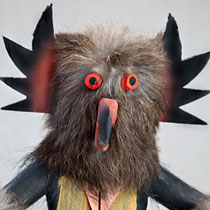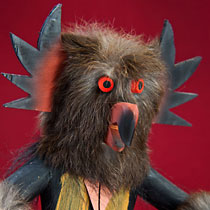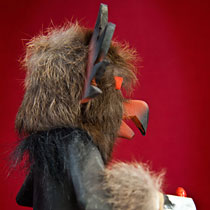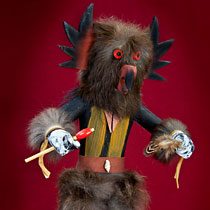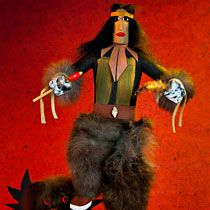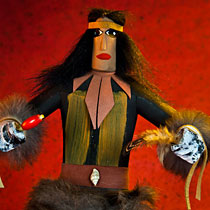Description of Figure/Doll
Handcrafted Kachina doll with removable owl mask. The removable mask is made from cardboard and covered in rabbit fur, with wooden feathers, beak and eyes to make it look like an owl. The dancer is created with a painted cottonwood body with a shell on his waist, leather trim and fur on his arms and legs. The doll is on a wood stand and carved into a dancing pose. He is holding feathers in one hand and a stick in the other. On the bottom of stand is the name of the doll “Owl”, and it is signed by the artist. The owl symbolizes intelligence and wisdom, and is said to be beneficial to crops because they eat rodents. Kachina dolls are popular with the Hopi and Navajo Indians.
Link to higher resolution images at ClipPix
USA: Nevada
Location: Western United States
Capital: Carson City
Main language: English
Currency: US Dollar
Figure/Doll
Construction: wood and rabbit fur
Height in Centimeters: 28
Height in Inches: 11
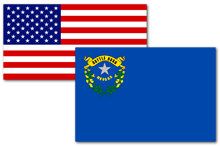
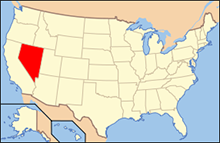
Nevada: Dams and Deserts
Reading Level: 4.80
My name is Natchez, and I live on the Duck Valley Reservation in Nevada. At one time, only Native Americans lived in Nevada. Then, about 1825, trappers and traders from the east started to “invade” our land. In 1850, mines with gold and silver were discovered, and more people came to the area. The rest, as they say, is history.
Life in Nevada has always been difficult. Nevada is the driest state in the United States. We only get about 7 inches of rain each year. The temperatures have reached as high as 125 degrees (Fahrenheit). A lot of the state is nothing but desert, with a few sage brushes and cacti.
About 80 years ago, a major event took place in Nevada. In 1935, the Hoover Dam was built across the Colorado River. It took almost 5 years to build Hoover Dam and many people died from rock slides, heat stroke, and other causes. There was even a rumor that a man may be buried in the concrete in the dam! When it was finished, Hoover Dam was the tallest dam in the world.
Hoover Dam and other dams provide water for Nevada and nearby states in the southeast. They block the rivers and create lakes where we can swim and fish. They also provide water to drink and grow crops. Dams can also create power.
Currently, there are still 32 Indian reservations and colonies in Nevada, including the Paiute, Washoe, and Shoshone tribes.

